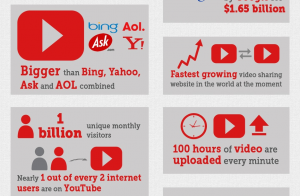It sounds simple enough, but just because someone purchases your products and services, doesn’t mean they will pay you on time. For small businesses, slow collections equals less cash at your disposal, which can tie up your investments. It also hurts you over time with poor cash flow, inventory build up, and inaccurate financial forecasts.
The money that’s owed by customers to another entity in exchange for goods or services that have been delivered or used, but not yet paid for is known as accounts receivables. Poorly managed accounts receivables is the number one accounting problem reported by small business owners.
To make sure accounts receivables are an area that strengthens — not devastates — your small business, review the practices below.

- Standard Policies: To get your accounts receivables in order, you need to have well-defined standard policies. How long will you give customers to pay for your goods? What actions will you take if payment is late? The businesses that tend to do better financially are also the ones that establish a formalized process from the start.
“All of these variables will impact the structure of your accounts receivable,” says an article in the U.S. Small Business Administration, because it affects when specific accounts will show up in your cash flow statement. According to an article in BizFilings, there is a specific formula for figuring this out:
Current Accounts Receivable Balance / Average Daily Sales = Average Collection Period
The formula above shows that the average collection period should be determined by dividing your current accounts receivable balance by average daily sales. If using annual data, divide the amount of average daily sales by 360; if using the previous quarter’s sales, divide the sales amount by 90.
Have clear systematize collection procedures. When it comes to handling accounts receivables, it’s best to have a clear, organized collection process to eliminate confusion.This will allow for quick decision-making and therefore, consistent results.
As the American Bureau of Collections recommends, your organization’s collection policy should be written-out and include:
- When to contact a customer
- How to contact a customer
- When to place an account on credit hold
- How to resolve disputes, deductions, etc.
- When to turn over delinquent accounts to an outside collection agency
- When to write an account off to bad debt
Establish clear cut rules for following up on late payment
Businesses that have a clear policy on late payment matters will know exactly what to do when faced with these issues. Once an invoice is past due, the U.S. Small Business Administration advises reaching out to your client with a gentle reminder.
“Your goal here is to get a confirmation that you’ll receive payment by X date, so that you can manage and plan your cash flow accordingly,” says the SBA. If a client becomes a repeated problem, set up a meeting to review matters and know when to place their account on hold or submit the account to a collection agency.

- Best Practices
Use a clean format and use clear wording for invoices. An Inc. article finds that the best invoices include “every relevant piece of data, including hours billed if you’re a service, or all the specs of a product if you’re a sales organization.”
For best results, ask each client from the start of your relationship what information they want provided on invoices, how you should invoice, when you should invoice, and who you should send your invoices to.
Additionally, when asking for payment, be specific in your terms. Mitch Solway, vice president of sales and marketing at online invoicing company FreshBooks, tells Inc, “One of the best pieces of advice we’ve uncovered in recent months is to think carefully about the actual wording on the terms you apply on your invoices. Being polite and asking for payment within 21 days seems to get our customers paid a lot faster than terms such as ‘due on receipt’ or ‘due immediately.”
Regularly assess customer credit. Before extending credit to a client, you should evaluate the risk you’re taking by checking their credit, much like a bank would do in a small business loan application.
Additionally, the Fair Credit Reporting Act allows you to buy a credit report on customers seeking credit from your business, so you should do so regularly. According to the American Bureau of Collections, business owners should also establish regular credit checks as part of their practice to monitor any changes and assess payment policies and collection plans accordingly.
Offer discounts for early payment. A customer will be more inclined to pay you early if they feel they are getting something out of the deal. Use the popular discount “2% for every 10, net 30 days term” which says that customers who pay within 10 days of purchasing goods will receive a 2 percent discount, with the total due in 30 days. If it’s worth it to you — and your cash flow — to get paid early, consider offering an even higher discount. An Intuit article discusses this strategy:
“A five or 10% discount for early payments provides a real incentive for customers to open their wallets sooner. Make sure the discount is advertised obviously on the invoices you send out – and make sure you can afford to offer the money off, too.”
Use a Collection Agency. Every once in awhile, you’ll have a customer who refuses to pay you and you’ll have to resort to submitting their account to a collection agency. QuickBooks Accountant advises this be a viable final option: “Don’t expect to see any new business from these customers, but then they aren’t the kind of customers you want anyway.”
Use software for invoicing. As your business grows, it’s worth considering an invoicing software to make sure nothing slips through the cracks.
There are a number of tools available for managing one’s money and Gene Marks, CPA and small business owner of The Marks Group, lists a few technologies in his recent Forbes article that can improve your accounts receivables practices and efficiency, including:
- Software KnowledgeSync notifies users when there are “overdue receivables, shortages of inventory, quotes that aren’t followed up timely or orders that miss deadlines.” (Price: Under $ 5,000)
- Anytime Collect is money-management tool that focuses solely on accounts receivable invoicing information, “sending out collection letters and emails to overdue customers (and supporting multiple contacts at an account), tracking activities (such as calls and emails) made with customers, maintaining notes, reporting on collection activities, recording cash payments.”
- Business owners only need to send invoices to com and the rest will be taken care of, which includes “scheduling, approval, notifications, and payments” — printed checks or electronic — not to mention all of the activities and information will be synced back to the business’ accounting system.

- Accounts receivable leads to cash flow. Put simply, if more money is flowing out than coming in, your ability to handle other financial obligations to expand your business is at risk.
When business owners talk about “flat sales” or “margins are off,” they’re asking one question: where has their cash gone? Companies showing “anemic gross profits and slow turnovers,” writes James McNeill Stancill, a professor of finance at the University of Southern California, in the Harvard Business Review, have a hard time generating more cash and experiencing higher growth.
For someone as busy as a small business owner, accounts receivable to sales ratio may be something easily ignored or pushed back for another day’s priority. This kind of thinking is exactly why accounts receivables remain the top accounting problem reported by small business owners. Smart businesses know managing their money is like managing the bloodline of their business as a healthy cash flow leads to more opportunities and growth, whereas a weak cash flow can run your business into the ground.
(205)






